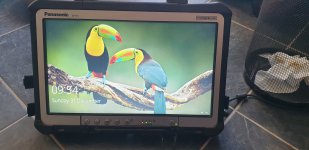I was fortunate or unfortunate to work for IBM's UK R&D at Hursley Park from 1981 onwards. So got to design and work on stuff like the first ever 1GB 5.25" hard drive, colour monitors, talking terminal (Parrot) and other state of the art computer kit. Prior to that military kit varying from Chieftan Tank Gun Control, under water submersible, portable acoustic tracking systems used for trials. After that a small private company (13 staff include MD and cleaner) designing high power, high voltage solidate state systems.
So where
@irc says "swore I would never touch another laptop." I actaully feel his pain. These days / my days of desigining and working on electronic systems are thankfully long gone. Like many here we were used to the "pin in hole" and typical DIL (dual in line) ICs, discrete tranistors and components with wire legs, robust connectors with pins & sockets. The only flex cables I ever worked with were in the hard drives.
Back then the early surface mount components had pads around the edges. Today some have pads underneath the chips never to be seen once the chips is soldered onto the board.
It has got to the stage where kit is assembled and if it works then ship it. If it doesn't then fixing it is an expensive and time consuming business even for the manufacturer.
With todays electonics systems and computers being put into cars where space is at a real premium then to one extent I'm surprise anything works after a year or two on the bumpy roads. But when it does fail then if you are lucky enough then the manufacturer will hopefully still be able to supply a replacement. If not repairs are expensive *if* you can find soemone to do it.
With today's laptops, TVs, monitors my pet hate is the insanely small "touch contact" ribbon cables. Often many. The worst are the display panel cables. It is not until you have spent hours putting the equipment back together and powered on to find you have missing line or rows of pixels or just a completely screwed up display. These contact cables are precision aligned by machine. No real alignment guides that humans can work with. Grrrrrrr!


